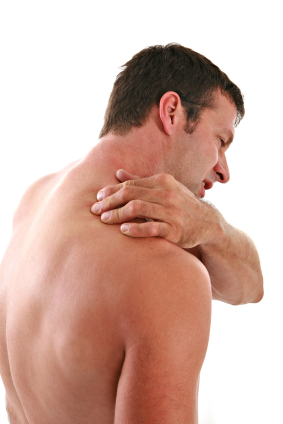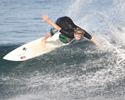Life As A Surfer
Common Surfing Injuries and How to Prevent Them
 Surfing may look like a casual risk free sport to a non-surfer, but everything has a price. This includes surfing. As surfers continue to establish new levels of performance on larger waves it is natural to start seeing some common injuries occur. Some injuries or conditions are progressive, meaning they happen over long periods of time. Some injuries are spontaneous, happening due to collisions or irregular body movements. Whichever the case, we want the loyal SurfScience reader to be armed with the knowledge of common ailments and the steps necessary to prevent these incidents.
Surfing may look like a casual risk free sport to a non-surfer, but everything has a price. This includes surfing. As surfers continue to establish new levels of performance on larger waves it is natural to start seeing some common injuries occur. Some injuries or conditions are progressive, meaning they happen over long periods of time. Some injuries are spontaneous, happening due to collisions or irregular body movements. Whichever the case, we want the loyal SurfScience reader to be armed with the knowledge of common ailments and the steps necessary to prevent these incidents.
Eye Damage: This is the eye, people. One of the more gruesome of the injuries suffered by surfers is damage sustained to an eye due to an errant surfboard tip. This can cause severe damage to an eye and may result in a permanently damaged eye and vision loss.
Prevention: The easier way to prevent extreme damage to your eye or any other part of your face is to put a soft nose guard on the tip of your surfboard. They are inexpensive and will make any contact with the surfboard’s sharp tip much less damaging.
Head Trauma: Trauma from a collision with a surfboard’s rails, fins, and nose is the most common cause of acute surfing injuries, according to Conservative Management of Sports Injuries, by Thomas E. Hyde and Marianne S. Gengenbach. Other common causes of injury are coral reefs, hard sand ocean floor, and submerged rocks. Hyde and Gengenbach go on to say that common head and neck injuries include concussion, cervical spine fracture, and fractures of the face, jaw, skull, and teeth.
Prevention: Many novice surfers decide to ride soft top surfboards as a preventative measure against head trauma. After reading the laundry list of possible injuries, it is starting to sound like a great idea. More experienced surfers who test their mettle against treacherous breaks will wear a helmet. Don’t believe me? See Tom Carrol at the Pipeline Masters. I dare you to call him out.
Lacerations: Feet and hands are some of the most common areas of injury. Our soft skin is no match for the sharp edges of a finely tuned surfboard fin or the razor sharp coral reef lurking underneath many of the world’s most famous waves. One long slice can mean stitches and can result in infection.
Prevention: Beginner surfers will sometimes decide to use softer fins on their surfboard. The difference in performance is only noticeable to more technically sound surfers and the benefit of reduced risk of injury makes this a great option. A good option to reduce the risk a coral reef presents is to wear booties on your feet. This may look out of place, but you may rather look like a kook and get shacked all day, rather than be back on the mainland waiting for a doctor’s needle to cure your infection.
Shoulder strain: The shoulder is most vulnerable to overuse. According to an article written by Sean Fyfe on the Sports Injury Bulletin, this can lead to Rotator-cuff impingement and tendinitis, resulting in pain in the front shoulder and the deltoid region. A chronic condition like this is most commonly seen in beginners (poor paddling technique) and older surfers (years of paddling).
Prevention: Although surfers are generally resistant to stretching, this simple precaution will save your body from injury and improve your performance. It is difficult to commit to stretching, but if you spend ten minutes observing the lineup and the different spots to surf it will pay dividends. Not only will you avoid a painful (impossible to sleep on your side) conditions, but you will also have a better idea of which spots are working at your local break.
Some interesting facts (according to Hyde and Gengenbach):
-Risk of significant injury doubles for a surfer in his 40s or later when compared to as a surfer younger than 20 years of age.
-The older, more advanced, and braver (big surf) you are, the more likely you are to incur a significant injury.
-The majority of injuries happen in smaller waves.
-Surfing in overhead waves increases the risk of more serve injuries.
-The occurrence of significant injury is twice as likely in overhead surf as in waves waist high or smaller.
-Take off and tube riding are the maneuvers most commonly leading to injury.















8 Comments